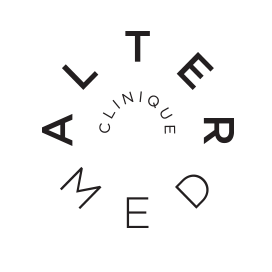Montreal masso-kinesitherapy
Stress is a concept that has become ubiquitous, both in our conversations and in our lives.
The public is now aware that particularly prolonged or acute stress has harmful effects.
Posture, too, although more recently, is becoming increasingly important. Just look at all the new gadgets for monitoring and improving posture that are popping up on the market.
What is less well known is that these two concepts have a reciprocal effect and influence each other in quite concrete ways.
Here's how, and what you can do to capitalize on this knowledge.
Stress and its effect on posture
Stress is a rather abstract concept and sometimes misunderstood. In layman's terms, stress occurs when a given demand (be it psychological, mechanical, etc.) is greater than our system is capable of providing.
xx
Today we will focus on psychological stress. This is governed by several hormones, but the two most important are cortisol and adrenaline.
Cortisol is a hormone secreted by the adrenal glands that is released during times of stress and can speed up the metabolism, increase blood pressure and create fatigue. Although necessary and safe in normal concentrations, it is usually associated with a negative connotation because of its harmful effects in higher concentrations and over time.
Adrenaline, on the other hand, has a much better reputation. It prepares the body for the fight or flight response in a confrontation. Its effects include redistribution of blood to the skeletal muscles, increased respiratory function and increased blood glucose.
Although each of these two hormones does not have strictly positive or negative effects, for the sake of understanding this text, you can think of cortisol as the stress hormone and adrenaline as the stress management hormone.
xx
How do hormones affect posture?
Scientific studies have shown that there is indeed an influence on the lumbar and cervical spine in situations of psychological stress. Since the spine is probably the most important structure in determining an individual's posture, it is reasonable to generalize this effect to the entire posture.
A 2000 study¹ shows that stress increases head protraction and muscle tension in the upper trapezius, among others. Another study from 2013 ² shows that stress increases compression and shearing of the lumbar vertebrae by muscular co-contraction in several subjects.
xx
Although the studies do not measure cortisol in their approach, it is reasonable to suggest that its level would have correlated with stress level. By compromising spinal posture, the body's axes of movement are altered, which can lead to discomfort, pain and injury.
How does posture influence hormones?
The last section may have seemed obvious to some of you, but what is less known is that our posture apparently influences our hormone secretion.
Unlike the effect shown in the previous section, which was not something we can voluntarily act on, this one is an interesting tool.
Studies conducted by Dr. Amy Cuddy reveal this surprising effect of what she calls Power Posing. Looking at the animal kingdom, she noticed that dominant animals exhibited more expansive postures, which she categorizes as dominant posturing. In contrast, individuals who were more subordinate, away from positions of power, exhibited more closed and cowering postures, which she categorizes as submissive posturing.
xx
Blood samples from the individuals tested reveal that individuals frequently in dominant postures had higher concentrations of adrenaline and lower concentrations of cortisol. In contrast, individuals in submissive postures had higher concentrations of cortisol and lower concentrations of adrenaline.
xx
In other words, submissives experienced more stress while dominants were in a better position to manage it. What becomes interesting is that in further study, Dr. Cuddy even identified that it was possible to change this individual hormonal cocktail by changing one's postural attitude, both in the long run and in the short run of a few minutes.
xx
So by "getting out of the way" and taking up lots of space, you are actively fighting stress!
xx
Subsequent studies on the subject also found that the size of the electronic devices used by the subjects predicted the effect on their stress hormones⁴ with cell phones causing more stress than tablets, tablets than laptops, and laptops than fixed tower computers. This is not very surprising if you imagine their respective usage postures.
xx
What you can do to help yourself
Now that we understand the link between stress and posture in detail, here are two little postural tips that may help you.
A classic tip is to imagine that a string is pulling the crown of our head (the top point of the skull which is often in the middle of a rosette of hair) towards the sky. This has the effect of lengthening the spine and preventing sagging.
A second common tip is to keep your back pressed against the back of the chair when sitting. This will prevent you from leaning forward.
With these two tips, you will be able to improve your posture and thus change your stress profile and your ability to manage it.
However, for more personalized advice and additional help in controlling the negative effects of poor posture, your best option is to consult your preferred qualified therapist! x
xx
x
IZAAK LAVARENNE, NDG PHYSICAL THERAPIST
xx
Sources
xx
1 Shahidi, B., Haight, A., & Malut, K. (2013, June 22). Differential effects of mental concentration and acute psychosocial stress on cervical muscle activity and posture. Retrieved January 28, 2019, from https://www.sciencedirect.com/science/article/pii/S1050641113001235
xx
2 Maras, W. S., & A. (2000, December 1). The Influence of Psychosocial Stress, Gender, and... : Spine. Retrieved January 28, 2019, from https://journals.lww.com/spinejournal/Abstract/2000/12010/The_Influence_of_Psychosocial_Stress,_Gender,_an d.12.aspx
xx
3 Cuddy, A. J., & Carney, D. R. (2010, September 20). Power Posing: Brief Nonverbal Displays Affect Neuroendocrine Levels and Risk Tolerance. Retrieved January 28, 2019, from https://journals.sagepub.com/doi/abs/10.1177/0956797610383437
xx
4 Bos, M. R., & Cuddy, A. J. (2013, May 21). IPosture: The Size of Electronic Consumer Devices Affects our Behavior. Retrieved January 28, 2019, from https://dash.harvard.edu/handle/1/10646419


